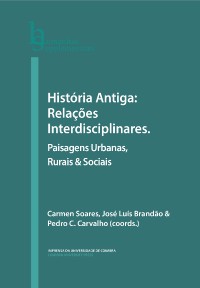Please use this identifier to cite or link to this item:
https://hdl.handle.net/10316.2/44760| DC Field | Value | Language |
|---|---|---|
| dc.contributor.author | Costa, Miguel Cipriano | |
| dc.date.accessioned | 2018-12-11T14:06:04Z | |
| dc.date.accessioned | 2020-09-06T16:57:41Z | - |
| dc.date.available | 2018-12-11T14:06:04Z | |
| dc.date.available | 2020-09-06T16:57:41Z | - |
| dc.date.issued | 2018 | - |
| dc.identifier.isbn | 978-989-26-1566-0 (PDF) | |
| dc.identifier.isbn | 978-989-26-1565-3 | |
| dc.identifier.uri | https://hdl.handle.net/10316.2/44760 | - |
| dc.description.abstract | The observation of metric patterns present in the current rural land parcelling in Alenquer (Portugal) floodplain, visible from the mapping and aerial photography, identified the existence of metric 8 x 8 actus corresponding to land Roman standards, which leads us to infer the possibility of rural land parcelling ever since the Roman period. The methodologies, and the placing of archaeological settlements in the long term, allow us to infer the drainage of alluvial area - along the Tagus river - in a subsequent period to the Iron Age. The change of settlement in the Roman period, moved to lower elevations ( altitudes lower than 10 meters), in areas with higher flood possibilities, allow advance the possibility that drainage is also associated with the construction of the land parcelling ever since that period. Keywords - archaeogeography | eng |
| dc.description.abstract | observação dos padrões métricos presentes no atual parcelário rural da várzea de Alenquer (Portugal), visíveis a partir da cartografia e da fotografia aérea, permitiu identificar a existência de métrica de 8 x 8 actus correspondente aos padrões agrários romanos, que nos leva a inferir a possibilidade da existência de parcelário rural já desde o período romano. As metodologias, e a disposição dos assentamentos arqueológicos na longa duração, permitem inferir a drenagem deste espaço aluvial junto ao rio Tejo num período posterior à Idade do Ferro. A mutação do povoamento em período romano, que se deslocou para cotas mais baixas (altitudes inferiores aos 10 metros) para zonas com maiores possibilidades de inundação, permitem avançar a possibilidade que a drenagem também esteja associada à construção do parcelário já desde esse período. | por |
| dc.language.iso | por | - |
| dc.publisher | Imprensa da Universidade de Coimbra | por |
| dc.relation.ispartof | http://hdl.handle.net/10316.2/44751 | por |
| dc.rights | open access | - |
| dc.subject | archaeogeography | eng |
| dc.subject | photo interpretation | eng |
| dc.subject | multidisciplinary | eng |
| dc.subject | Geographic Information Systems (GIS) | eng |
| dc.subject | land parcelling roman | eng |
| dc.subject | arqueogeografia | por |
| dc.subject | foto-interpretação | por |
| dc.subject | multidisciplinaridade | por |
| dc.subject | sistemas de informação geográfica (SIG) | por |
| dc.subject | parcelário romano | por |
| dc.title | Parcelário romano na várzea de Alenquer (Portugal): ensaio em arqueogeografia | por |
| dc.title.alternative | Land parcelling Roman in Alenquer (Portugal) floodplain: archaeogeographic study | eng |
| dc.type | bookPart | por |
| uc.publication.firstPage | 199 | - |
| uc.publication.lastPage | 217 | - |
| uc.publication.location | Coimbra | por |
| dc.identifier.doi | 10.14195/978-989-26-1566-0_9 | - |
| uc.publication.section | Paisagens Rurais | por |
| uc.publication.digCollection | PB | por |
| uc.publication.orderno | 30 | - |
| uc.publication.area | Artes e Humanidades | por |
| uc.publication.bookTitle | História Antiga: relações interdisciplinares: paisagens urbanas, rurais & sociais | - |
| uc.publication.manifest | https://dl.uc.pt/json/iiif/10316.2/44760/203474/manifest?manifest=/json/iiif/10316.2/44760/203474/manifest | - |
| uc.publication.thumbnail | https://dl.uc.pt/retrieve/11054012 | - |
| uc.publication.parentItemId | 55076 | - |
| uc.itemId | 68707 | - |
| item.fulltext | With Fulltext | - |
| item.grantfulltext | open | - |
| Appears in Collections: | História Antiga: relações interdisciplinares: paisagens urbanas, rurais & sociais | |
Files in This Item:
| File | Description | Size | Format | |
|---|---|---|---|---|
| parcelario_romano_na_varzea_de_alenquer.pdf | 868.42 kB | Adobe PDF |  |
Items in DSpace are protected by copyright, with all rights reserved, unless otherwise indicated.
